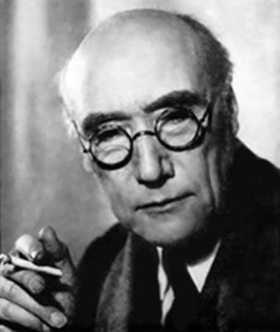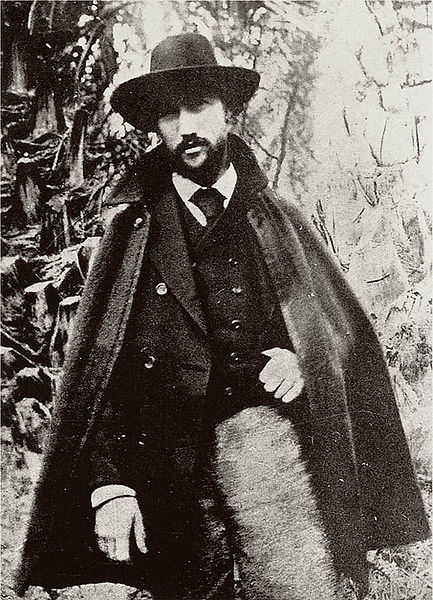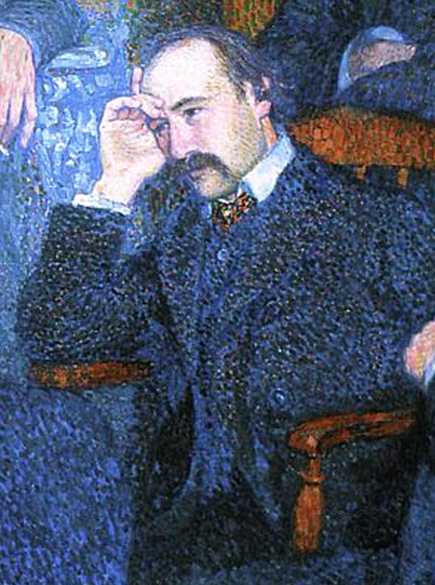<Back to Index>
- Ornithologist Francis Willughby, 1635
- Writer André Paul Guillaume Gide, 1869
- Foreign Minister of Mexico José Cecilio del Valle, 1780
PAGE SPONSOR



André Paul Guillaume Gide (22 November 1869 – 19 February 1951) was a French author and winner of the Nobel Prize in literature in 1947. Gide's career ranged from its beginnings in the symbolist movement, to the advent of anticolonialism between the two World Wars.
Known for his fiction as well as his autobiographical works,
Gide exposes to public view the conflict and eventual reconciliation
between the two sides of his personality, split apart by a strait - laced
education and a narrow social moralism. Gide's work can be seen as an
investigation of freedom and empowerment in the face of moralistic and
puritanical constraints, and gravitates around his continuous effort to
achieve intellectual honesty. His self - exploratory texts reflect his
search of how to be fully oneself, even to the point of owning one's
sexual nature, without at the same time betraying one's values. His
political activity is informed by the same ethos, as suggested by his
repudiation of communism after his 1936 voyage to the USSR. Gide was born in Paris on 22 November 1869, into a middle class Protestant family. His father was a Paris University professor of law and died in 1880. His uncle was the political economist Charles Gide. Gide was brought up in isolated conditions in Normandy and became a prolific writer at an early age, publishing his first novel, The Notebooks of Andre Walter (French: Les Cahiers d'André Walter), in 1891. In 1893 and 1894, Gide traveled in Northern Africa, and it was there that he came to accept his attraction to boys. He befriended Oscar Wilde in Paris, and in 1895 Gide and Wilde met in Algiers.
There, Wilde had the impression that he had introduced Gide to
homosexuality, but, in fact, Gide had already discovered this on his
own.
In 1895, after his mother's death, he married his
cousin Madeleine Rondeaux, but the marriage remained unconsummated. In 1896, he became mayor of La Roque - Baignard, a commune in Normandy. In 1901, Gide rented the property Maderia in St. Brelade's Bay and lived there while residing in Jersey. This period, 1901 – 1907, is commonly seen as a period of apathy and unsettlement in his life. In 1908, Gide helped found the literary magazine Nouvelle Revue Française (The New French Review). In 1916, Marc Allégret,
only 15 years old, became his lover. Marc was the son of Elie
Allégret, best man at Gide's wedding. Of Allégret's five
children, André Gide adopted Marc. The two fled to London, in
retribution for which his wife burned all his correspondence, "the best
part of myself," as he was later to comment. In 1918, he met Dorothy Bussy, who was his friend for over thirty years and who would translate many of his works into English. In the 1920s, Gide became an inspiration for writers such as Albert Camus and Jean - Paul Sartre. In 1923, he published a book on Fyodor Dostoyevsky; however, when he defended homosexuality in the public edition of Corydon (1924) he received widespread condemnation. He later considered this his most important work. In
1923, he sired a daughter, Catherine, by Elisabeth van Rysselberghe, a
woman who was much younger than him. He had known Elisabeth for a long
time, as she was the daughter of his closest female friend, Maria
Monnom, the wife of his friend, the Belgian neo - impressionist painter Théo van Rysselberghe.
This would cause the only crisis in the long standing relationship
between Allégret and Gide and damaged the relation with Van
Rysselberghe. This was possibly his only sexual liaison with a woman
and it was brief in the extreme, but his daughter Catherine became his
only descendant by blood. He liked to call Elisabeth "La Dame Blanche"
("The White Lady"). Elisabeth eventually left her husband to move to
Paris and manage the practical aspects of Gide's life (they had
adjoining apartments built for each of them on the rue Vavin). She
worshipped him, but evidently they no longer had a sexual relationship.
Gide's legal wife, Madeleine, died in 1938. Later he used the
background of his unconsummated marriage in his novel Et Nunc Manet in Te. In 1924, he published an autobiography, Unless the seed dies (French: Si le grain ne meurt). After 1925, he began to demand more humane conditions for criminals.
From July 1926 to May 1927, he travelled through the French Equatorial Africa colony with his lover Marc Allégret. He went successively to Middle Congo (now the Republic of the Congo), Oubangui - Chari (now the Central African Republic), briefly to Chad and then to Cameroun before returning to France. He related his peregrinations in a journal called Travels in the Congo (French: Voyage au Congo) and Return from Chad (French: Retour du Tchad).
In this published journal, he criticized the behavior of French
business interests in the Congo and inspired reform. In particular, he
strongly criticized the Large Concessions regime (French: régime des Grandes Concessions),
i.e. a regime according to which part of the colony was conceded to
French companies and where these companies could exploit all of the
area's natural resources, in particular rubber.
He related for instance how natives were forced to leave their village
during several weeks to collect rubber in the forest, and went as far
as comparing their exploitation to slavery. The book had important influence on anti-colonialism movements in France and helped re-evaluate the impact of colonialism.
During the 1930s, he briefly became a
communist, or more precisely, a fellow traveler (he
never formally joined the Communist Party). As a distinguished writer
sympathizing with the cause of communism, he was invited to tour the Soviet Union as
a guest of the Soviet Union of Writers. The tour disillusioned him and
he subsequently became quite critical of Soviet Communism. This
criticism of Communism caused him to lose socialist friends, especially when he made a clean break with it in Retour de L'U.R.S.S. in 1936. He was also a contributor toThe God That Failed. ...and after his visit to the Soviet Union:
Gide left France for Africa in 1942 and lived in Tunis until the end of World War II. In 1947, he received the Nobel Prize in Literature. He devoted much of his last years to publishing his Journal. Gide died in Paris on 19 February 1951. The Roman Catholic Church placed his works on the Index of Forbidden Books in 1952.